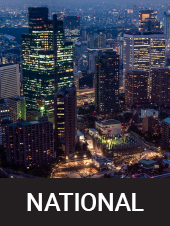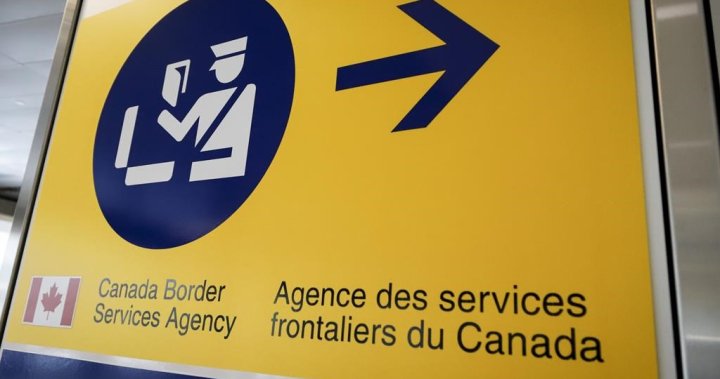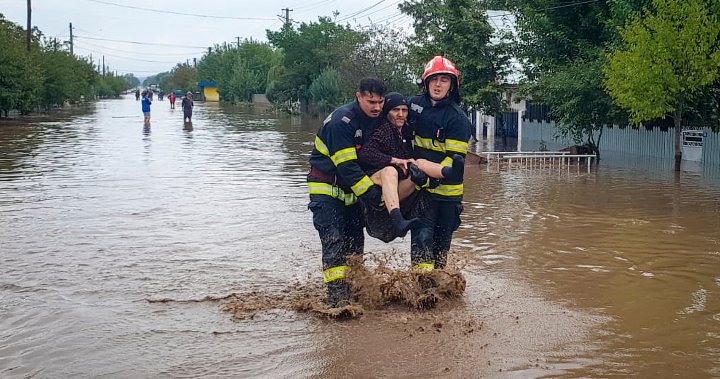Canada’s border services agency has no infrastructure in place to search trains for drugs, people and other goods crossing illegally into the country by rail, the head of the border agents’ union says — a security gap that adds to concerns about an overall lack of enforcement at the border.
Mark Weber, national president of the Customs and Immigration Union, says a shortage of personnel and equipment at official points of entry means less than one per cent of containers moving through Canadian seaports are being searched for illicit goods.
That rate is even smaller for cross-border rail traffic, he said.
“We don’t do it at all,” he told Mercedes Stephenson in an interview that aired Sunday on The West Block. “We don’t know what comes in via train.
“Could be products, people (coming in, but) we don’t have the infrastructure to do those searches. … That’s really something Canada should be investing in.”
In 2019, Ontario Provincial Police discovered nearly 200 kilograms of methamphetamine stashed in the spare tires of new vehicles shipped from Mexico to the province by rail. The drugs were first discovered by auto dealership employees in four Ontario communities, and police later said cars from the shipment also made their way to Quebec and New Brunswick.
The Canadian Press reported in 2009 that an internal CBSA report obtained via access to information laws found just two officers were checking some 400,000 rail cars and containers crossing into Canada annually, after a screening program that began in 2000 fell into disrepair.

British Columbia’s premier and lawmakers have called for enhanced policing and resources for the Canada Border Services Agency (CBSA) to search shipping containers at the ports, a key entry point for fentanyl products and equipment from China.
A report last year said Canada’s port security was similar to the lax enforcement and corruption seen in the Marlon Brando movie On the Waterfront.
Canada’s border security is under increased scrutiny as U.S. president-elect Donald Trump has called for crackdowns on irregular immigration and drug trafficking in North America.
Trump has threatened to put 25 per cent tariffs on all goods from Canada and Mexico unless those countries address his concerns, which are focused on illegal entry into the U.S.
But Weber said persistent staff shortages and an increasing reliance on new technology like self-declaring kiosks at airports means Canada is not able to properly screen what’s coming into the country, either. He said people with ill intent can simply lie in a self-declaration, whereas a CBSA agent could determine whether that person is honest with just a few questions.

Get daily National news
Get the day’s top news, political, economic, and current affairs headlines, delivered to your inbox once a day.
“Any time you remove a human interaction with the traveller, you’re lessening your security,” he said. “So we find that there’s a lot happening that we’re really unaware of right now. … We speak to almost no one anymore.”
The union has said it is short between 2,000 and 3,000 CBSA personnel to fulfil its basic mandate, which in addition to enforcing official points of entry also includes intelligence gathering, searching cross-border vehicles and shipping containers, and finding and removing people who are in the country illegally.
The previous Conservative government cut 1,100 CBSA positions in 2012, and Weber said those jobs have not returned since the Liberals took over in 2015.

He said the situation is similar for inland enforcement, with only “a couple hundred officers” tasked with finding and removing people across the country.
“Given the volumes that have to be found and removed, it’s really an uphill battle,” he said. “You’re relying, again, largely on people to self-report. And again, if someone doesn’t want to leave and they don’t want to be found, that’s a human being who has to do that work.”
The CBSA told Global News that 2,774 deportation orders have been issued this year as of Nov. 18, a number already higher than those for previous full years going back to 2016. So far this year, there have been 1,290 enforced removals by CBSA.
Since 2016, the number of enforced removals per year has been about half the number of deportation orders issued.
Last year, a total of 15,179 people were removed by Canada either through enforcement or voluntarily following a removal order, with 12,401 removed so far this year. Immigration Minister Marc Miller told reporters last month those numbers were record highs.
Weber said CBSA regularly gathers intelligence to both determine where fentanyl seizures in Canada comes from and whether organized crime groups like Mexican cartels are trying to enter the country. But he said that knowledge only goes so far.
“When you’re not having the interactions with most travellers that come through, you don’t know what you’re not looking for,” he said.
Is Canada ready for mass deportations from the U.S.?
Weber said the staffing shortages at CBSA means the agency “simply doesn’t have the staffing levels to deal with” a potential flood of people fleeing the U.S. for Canada when Trump follows through with his promise of mass deportations next year.
He noted many of those potential arrivals will be between official entryways — portions of the border that are policed by the RCMP.

Brian Sauvé, president of the National Police Federation union that represents over 20,000 RCMP members, told Stephenson the force is “uniquely positioned” to surge additional resources from across the country to the border.
He said newly graduated cadets can be drafted to compliment existing border security teams on a rotating basis, a strategy deployed in the aftermath of the 2014 Parliament shooting to boost security in Ottawa.
The RCMP Academy is seeing record levels of applicants and is on track to be almost at capacity next year after achieving similar levels this year, Sauvé added, meaning there will be plenty of those cadets to utilize if necessary.
The NPF has asked Ottawa for $300 million over four years to hire 1,000 more RCMP officers and bolster overall resources.
“Longer-term solutions, stronger investments into the RCMP for manpower directly toward those federal policing roles, will definitely be able to keep the border more secure,” Sauvé said.
Public Safety Minister Dominic LeBlanc told MPs last week that Canada will commit more personnel and equipment for border security before Trump’s inauguration on Jan. 20. He said both the RCMP and CBSA have been consulted.
Sauvé said RCMP members “are definitely making apprehensions on a regular basis coming up north” from the U.S., “but are also noticing a flow to the south.”
“It’s obviously a concern because you do have guns that are coming up from the states, guns that are used in crimes in Canada,” he said.

The U.S. is the largest source of illegal firearms in Canada, according to Justice Canada, but gun tracing data is limited.
An RCMP spokesperson told Global News last week the force has “no evidence, nor intelligence, to suggest that an increase of asylum seekers crossing the border from the U.S. to Canada has occurred” and its border posture is unchanged.
“The more that we can enforce that border, the more that we can make Canada a more secure country, I think it’s good for Canadians,” Sauvé said.
—with files from the Canadian Press and Global’s David Akin





